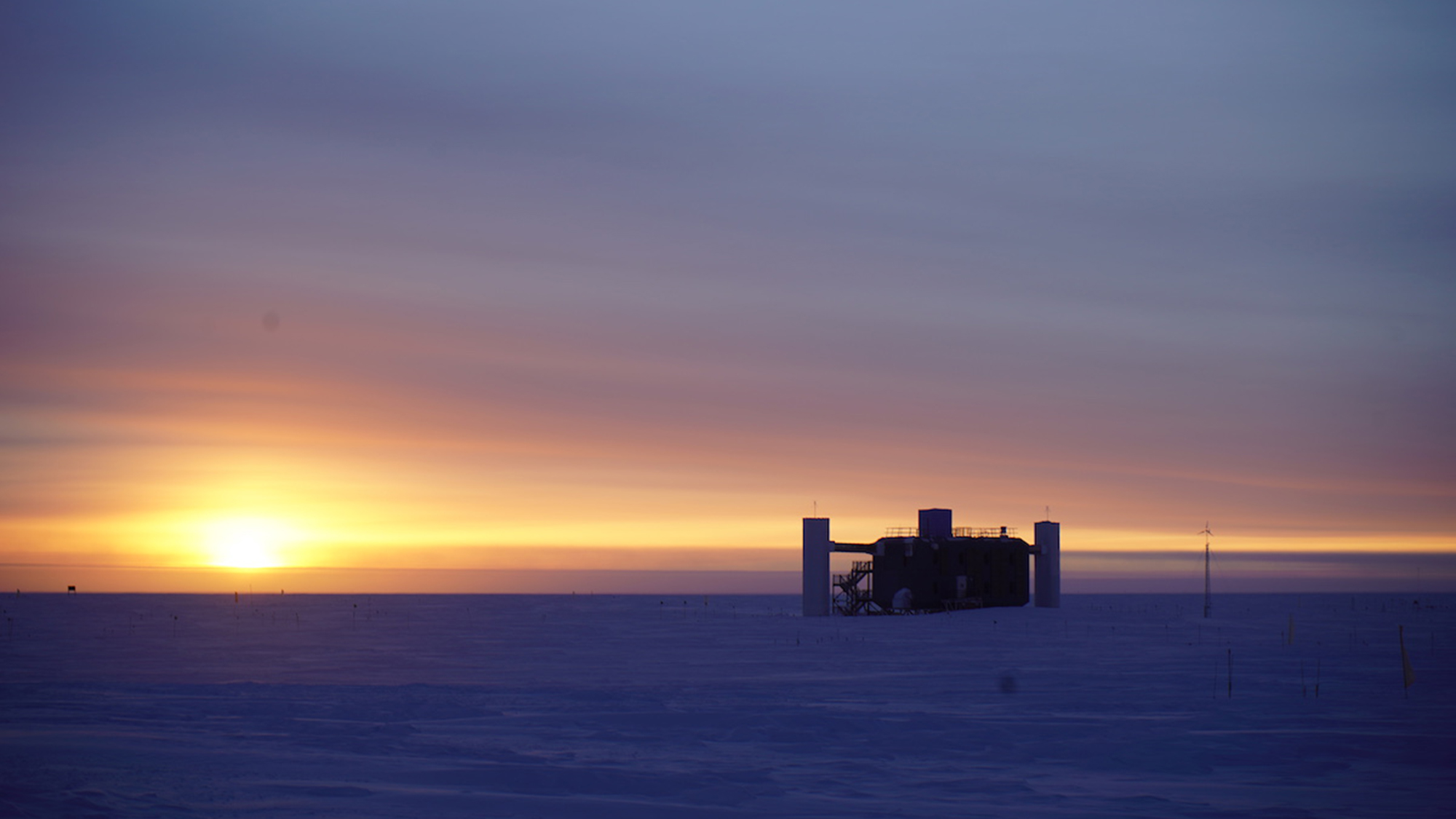At the South Pole, there’s a science experiment that makes the Burj Khalifa—the world’s tallest building—look small. It’s called IceCube, and it’s built 2,500 meters down into the Antarctic ice. Its job? Catching some of the hardest-to-pin-down particles from space: neutrinos.
Despite the fact that Antarctica is extraordinarily difficult to get to, astronomers love it. Not only is IceCube located down there, but they’ve also built a radio telescope and set up monitoring stations to count neutrons. What could possibly make such a remote location so desirable for space science that it’s worth all that trouble?
The poles are unique places on our planet—their nights can be much longer than us low-latitude folks are used to, and the aurorae shine most brightly there. (Not to mention the fact that they’re covered in ice and almost totally devoid of civilization.)
For astronomy, a lack of civilization is generally considered a plus. The further away you are from human settlement and electricity, the less light pollution you’ll encounter from nearby bright city lights. A lot of places on Earth meet that criterion: for example, the Atacama desert plateau in Chile, where many telescopes are located.
[ Related: Why astronomers keep staring at the same spot in the sky ]
But the South Pole is a hotspot for astronomers for different, weirder reasons—because there, you can see different, weirder particles from space: neutrons and neutrinos. Neutrons are the neutral counterpart to protons, one of the constituent parts of an atom. Neutrinos are an ultra-light kind of particle that barely interacts with anything. They’re so sneaky that 100 trillion of them pass through your body every second and you’ll never be able to tell.
Both neutrons and neutrinos relate to cosmic rays, atomic nuclei that fly through space at the speed of light before they encounter Earth. “Cosmic rays in the universe carry about as much energy as starlight and so not understanding them is, in some sense, a problem of the same magnitude as not understanding starlight,” explains Nathan Whitehorn, astronomer at Michigan State University.
When cosmic rays hit our atmosphere, they interact with other atoms and create so-called “air showers” of other high-energy particles, including neutrons and neutrinos. The universe also makes some neutrinos out in deep space, known as astrophysical neutrinos to distinguish from atmospheric neutrinos created in air showers.

Things like supernova explosions and the solar wind can create cosmic rays with enough energy to make neutrons rain down on Earth. However, “at higher energies, where we are looking with neutrinos, we simply have no idea,” says Whitehorn. “Though it is most likely related to accretion onto supermassive black holes.”
There is a reason why the South Pole is a key site for observing neutrons, and a totally different reason why it’s so good for neutrinos. For neutrons, “the polar regions are fantastic for basically the same reason that they are where you see auroras: the Earth’s magnetic field does not deflect cosmic rays the way it does at the equator because you are close to the magnetic poles,” explains Whitehorn. Essentially, you get a more direct view of cosmic rays at this special location in Earth’s magnetic field.
For neutrinos, on the other hand, you need a humongous area for your detector because neutrons are so slippery. The material also needs to be as transparent as possible so your detector can spot the tiny light given off when a neutrino does finally interact with something.
If you had a detector the size of a person, you’d have to wait about 100 years to see one neutrino. But with a very large amount of material—say, 1 billion tons of ice—you’re in business to do some science. “The bottom of the polar icecap is, weirdly, rather a convenient place to find that,” says Whitehorn.
Neutron monitors are smaller, and some do actually exist at the North Pole. But the North Pole is simply too fickle to build a stable 1 billion ton vat of ice hooked up with high tech monitors. “The North Pole is more difficult because ice coverage there fluctuates,” explains Brandon Pries, astrophysicist at Georgia Tech. “There is a foundation of bedrock underneath Antarctica that serves as a solid base for the IceCube instruments.” This bedrock is also why Antarctica is home to the South Pole Telescope, a radio observatory that helped take the first ever photo of a black hole.
Now when you think of the South Pole, you’ll remember there’s more than penguins down there—there’s actually a one-of-its-kind neutrino hunting machine helping us study the cosmos.

